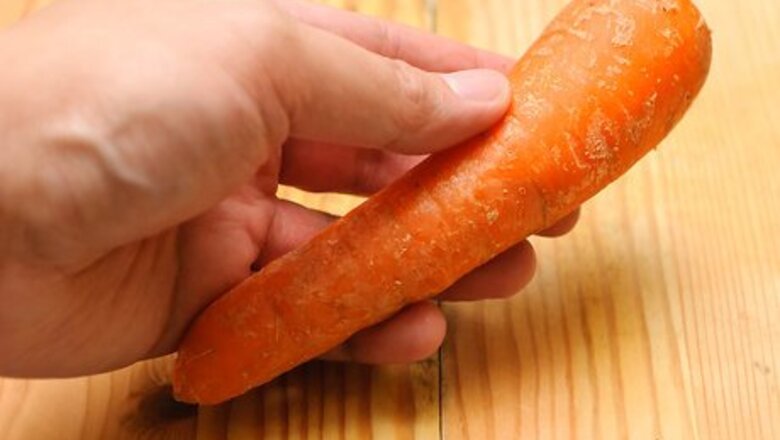
views
Preparing the Carrots for Canning
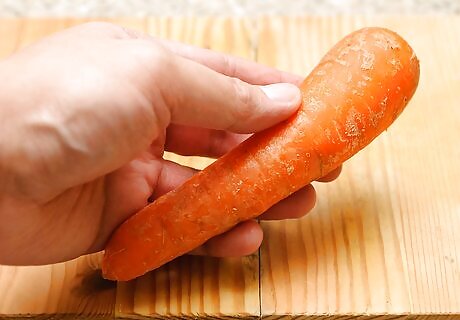
Select your carrots. The best candidates for canning will be carrots that are crisp, tender, and fresh. You'll have the best results with those that are roughly 1 to 1¼ in (2.5 to 3.2 cm) thick at the base of the carrot. Larger carrots often have too high of fiber content to work well with canning.
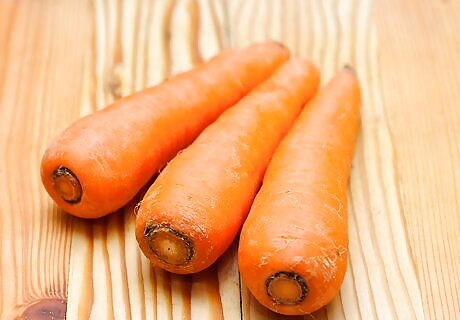
Trim your carrots. You can do this with a sharp paring knife. If your carrots still have leaves and/or a stem attached, you should trim these off so only the meat of the carrot remains. Also, if you notice discolored or decayed parts on your carrots, these should be removed. Cut roughly 1 in (2.5 cm) below the woody, stiff part of the stem to remove it from the meat of the carrot.
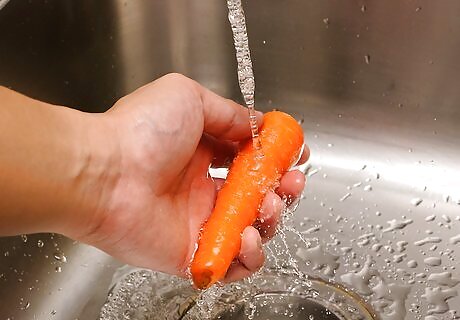
Wash the carrots. Running cool water over your carrots should be enough to remove bacteria and dirt from your carrots, especially if they are relatively clean. If your carrots are fresh from the garden or quite dirty, a stiff bristle brush can help you remove dirt from their surface.
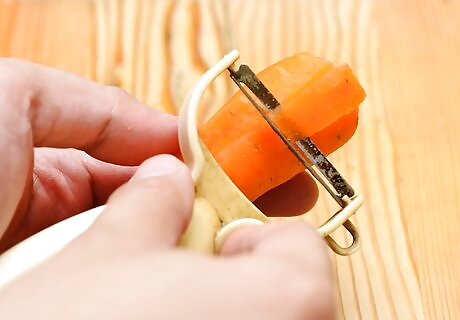
Peel the carrots. You can do this either with a paring knife or a potato peeler. Take the knife or peeler and cut free the outer skin of the carrot. Once you are finished, you can throw away the peeled skin or compost it.
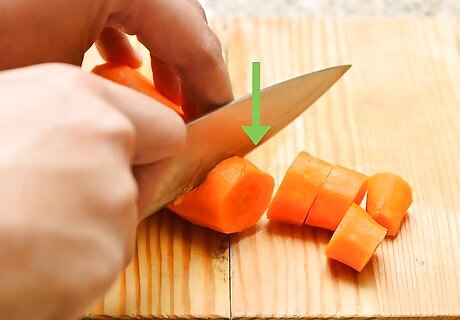
Re-rinse and cut the carrots into smaller pieces. After peeling, you should rinse your carrots again in cool water before cutting them with a suitable knife, like a paring knife. Be careful not to cut your carrots no thinner than about /8 of an inch (.32 cm) thin. They'll be cooked in your pressure canner, and smaller pieces can become mushy. Depending on the thickness and length of your carrots, you may only need to cut them lengthwise. Longer carrots might need to be cut lengthwise and then into parts widthwise.
Preparing the Jars and Pressure Canner
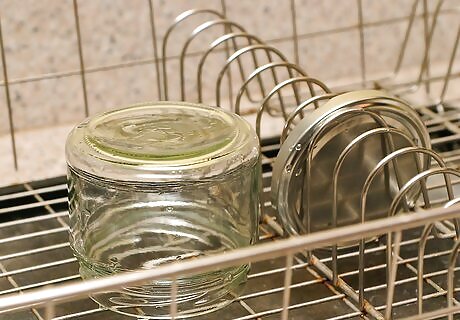
Sterilize your jars and lids. You can do this easily with your home dishwasher. Simply set it to "sanitize" and allow it to run through a cycle with your jars and lids inside. Once the cycle is finished, your jars will be ready for canning. If you do not have a dishwasher, you can preheat your oven to 225°F (107.2°C), put your jars in a roasting pan, and insert the jars into your oven for about 20 minutes. Use caution when removing the jars. They'll be very hot after sterilizing. You can also use a water bath canner to sterilize your jars. Place your jars onto the rack of the canner and fill it with enough water so the jars are filled. Boil the jars in the canner for 10 minutes, then use your jar lifter to remove the hot jars. Lids cannot be sterilized through the previously mentioned methods. Doing so can damage the sealing compound on them. Lids can be sterilized by submerging them in water and then simmer the water in a saucepan. Do not bring your water to a rolling boil. Simmer the lids for 5 to 10 minutes and then remove them with tongs.
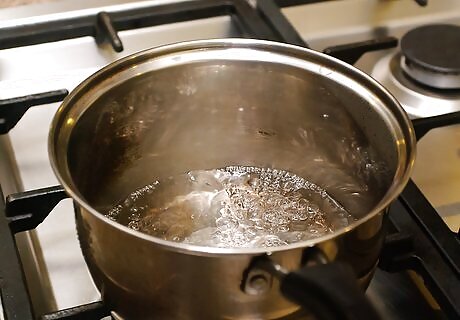
Boil a large pot of water. In a large pot on your stove top, bring water to a rolling boil. You might also want to add salt to your water, though this is not necessary. If you choose to do so, add ½ tsp of salt per pint (473 mL), and 1 tsp per quart (liter) of water. This method is referred to as "hot packing." However, you can also raw pack carrots. To do this, simply pack the raw carrots into your canning jars tightly, leaving about 1 in (2.5 cm) of headspace. Salt is often added to canned vegetables to add to the flavor of the vegetable. If you like your vegetables plain, you should skip adding salt to your water.
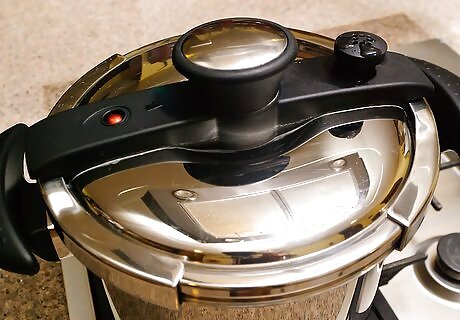
Heat up the pressure canner. Different pressure canners will have different features, so you should always follow the directions that came with your pressure canner for best results. The altitude of the area you live will influence the setting you need to use with your pressure canner, so you should adjust your canner accordingly. Canner Adjustment Table Altitude in Feet Dial Gauge Canner Weighted Gauge Canner 0-1000 11 10 1001-2000 11 15 2001-4000 12 15 4001-6000 13 15 6001-8000 14 15 8000-10,000 15 15
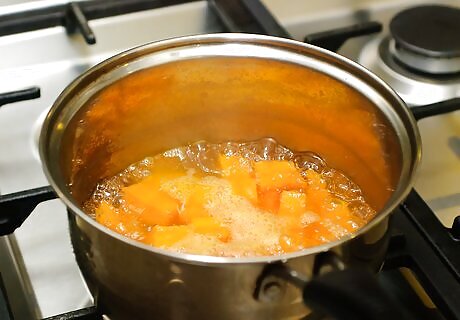
Place the carrots in the boiling pot of water. Since your pressure canner will also cook the carrots, you don't need to boil them in the water for a long period of time. Five minutes will be enough to prepare your carrots for canning.
Canning the Carrots
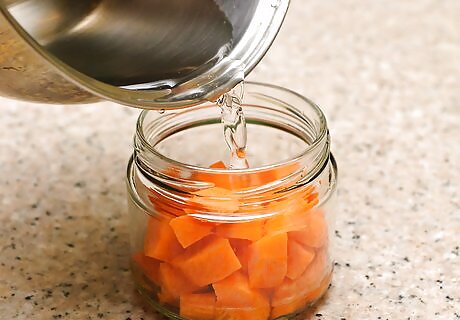
Pack the jars with carrots. You should use the method that works best for you. In some cases, you might find that you can pour the hot water and carrots into the jar from the pot. For large quantities, this might not be feasible, in which case you might want to use tongs to remove the carrots. Carrots should be packed relatively tightly in the jars and each jar should have about 1 in (2.5 cm) of open space between the top of your carrots/water and the lip of the jar. If you removed your carrots with tongs, you'll need to pour the boiling water into the jars with the carrots.
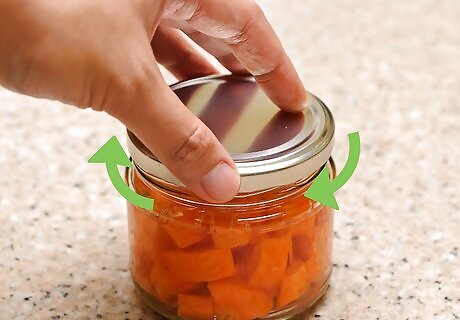
Put the lids on the jars. First wipe the lids with a piece of paper towel or a lint free cloth. Then, place the metal lids of your canning jars so that each lid is centered on the mouth of the jar. After that, screw the band of the lids of your jars until they are finger tight. Be careful while doing this. The jars will have likely become very hot with the heat of the carrots and the water. You may want to hold the jars in place with an oven mitt, pot holder, or several layers of cloth (like a folded dish towel) to protect your hand from heat and keep jars stationary while attaching the lids.
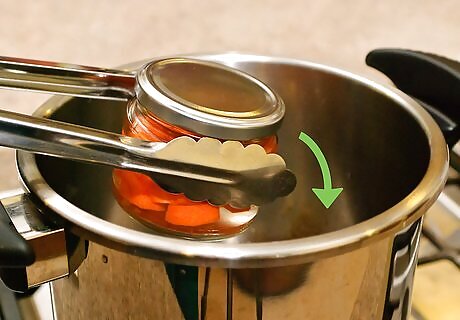
Put the jars in the canner. Again, different canners may have slightly different procedures. Generally, you'll need to leave your jars in the canner for about 10 minutes, leaving the weight off but the lid on. At this point, the jars will likely be quite hot. You may need to use a pair of tongs or an oven mitt to move your jars from where they are to the pressure canner.
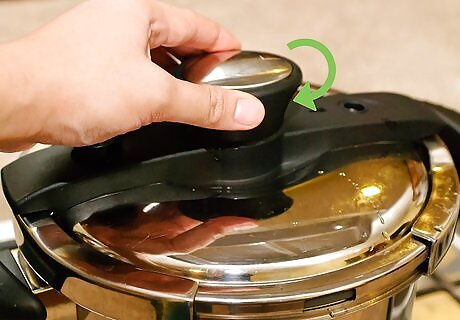
Add the weight to your pressure canner. For most pressure canners, after 10 minutes have passed, you'll need to close all openings until the pressure gauge reaches 10. For most pressure canners, you'll want to maintain this level of pressure for about 25 minutes. Set a timer on your phone or use a kitchen timer so you don't forget about your carrots and end up with a big mess.
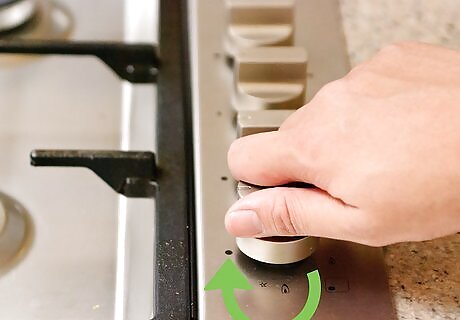
Turn off the heat to let the jars cool down. Depending on factors like your altitude, climate, and equipment, this could take anywhere from 45 minutes to an hour. Before opening your canner but after it has cooled, open the pressure valves and wait until the valve gauge reaches 0.
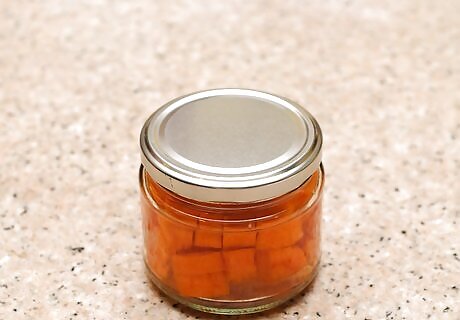
Remove the jars and let them cool overnight. Residual heat can remain in your jars for quite some time. Allow the jars to cool slowly and naturally by leaving them out in a safe place in your kitchen overnight. Be careful not to leave jars where children or family member might accidentally touch them.
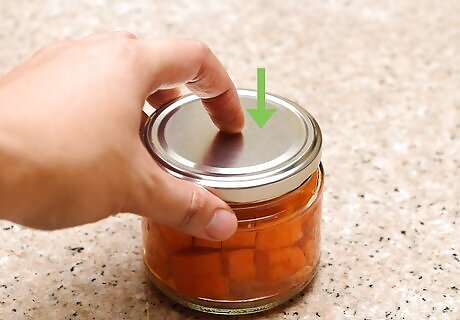
Check the jars for proper sealing. An improper seal can lead to dangerous bacteria growing in your jars. You can check the seal by gently poking the top of the jar with your finger and listening for a popping sound. If you hear this or feel the lid flex under your finger, the jar is improperly sealed. Improperly sealed jars can be stored in the refrigerator and eaten as you would normally. You can also repeat the process to reseal the jar, but in many cases, this can result in the carrots becoming overcooked.
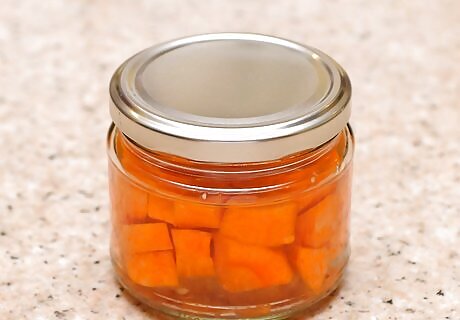
Enjoy your canned carrots throughout the year. Canned vegetables can last for up to two years and can last for 7 to 10 days after opening if you refrigerate them. You may want to store your carrots in cold storage or your basement so they are easily accessible but out of the way.










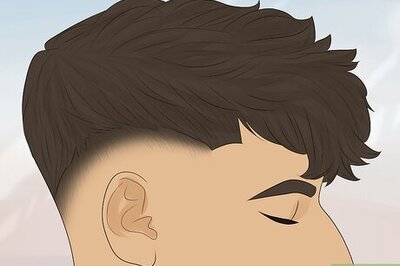









Comments
0 comment